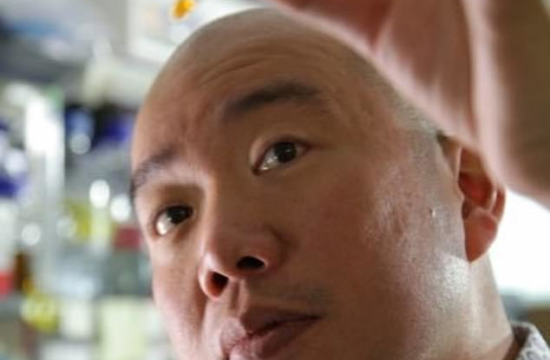
Author Stephen King was born in September, 1947 in Portland, Maine. His father deserted the family when he was two, leaving his mother to raise him and his older brother David by herself, sometimes under great financial difficulties. Though for several years she kept the family on the move to find work, they returned to Durham, Maine when King was 11, where Ruth King’s siblings paid her to care for her parents until their death. In Durham, for the fifth and sixth grade, King attended a one-room schoolhouse with four other children — the kids who would inspire the characters in Stand by Me. “There’s a lot of stuff in ‘The Body’ that’s just simply history that’s been tarted up a little bit,” said King.
“For 10 years, my family lived a virtual barter existence, practically never seeing any hard cash,” King recalled. “If we needed food, relatives would bring a bag of groceries, if we needed clothes, there’d always be hand-me-downs. I guess in many ways it was a hardscrabble existence, but not an impoverished one in the most important sense of the word. Thanks to my mother, the one thing that was never in short supply, corny as it may sound to say, was love. And in that sense, I was a hell of a lot less deprived than countless children of middle-class or wealthy families whose parents have time for everything but their kids.”
As a young child, King witnessed a horrifying accident. “The event
occurred when I was barely four,” King recounted. “According to Mom, I
had gone off to play at a neighbor’s house — a house that was near a
railroad line. About an hour after I left, I came back, she said, ‘as
white as a ghost.’ I would not speak for the rest of the day. I would
not tell her why I’d not waited to be picked up or phoned that I wanted
to come home. I would not tell her why my chum’s mom hadn’t walked me
back, but had allowed me to come home alone. It turned out that the kid
I had been playing with had been run over by a freight train while
playing on or crossing the tracks… My mom never knew if I had been
near him when it happened. But I have no memory of the incident at all,
only of having been told about it some years after the fact.”
Some critics have suggested that this event may have been the
catalyst that awakened King’s dark imagination, but King himself has
dismissed the notion. “I believe this is a totally specious idea —
such shoot-from-the-hip psychological judgments are little more than
jumped-up astrology,” he said.
Instead, King believes that what changed him was the discovery of a
box of his father’s old paperbacks from the mid-’40s. “For me, on a
cold fall day in 1959 or 1960, the attic over my aunt and uncle’s
garage was the place where that interior dowsing rod suddenly turned
over, where the compass needle swung emphatically toward some mental
true north. The box I found that day was a treasure trove of old Avon
paperbacks. Avon, in those days, was the one paperback publisher
committed to fantasy and weird fiction. The pick of the litter was an
H.P. Lovecraft collection from 1947 called The Lurking Fear and Other Stories.
I took the books out of the attic with me. That day and the next, I
visited the Plains of Leng for the first time, visited the towns of
Dunwich and Arkham, Massachusetts, and was, most of all, transported by
the bleak and creeping terror of ‘The Color Out of Space.’”
“I was prey to a lot of conflicting emotions as a child,” said King.
“I had friends and all that, but I often felt unhappy and different —
estranged from other kids my age. I was a fat kid — ‘husky’ was the
euphemism they used in the clothing store — and pretty poorly
coordinated, always the last picked when we chose teams. I was
terrified and fascinated by death — death in general and my own, in
particular. I was absolutely convinced that I’d never live to reach 20.
I envisioned myself walking home one night along a dark, deserted
street, and somebody or something would jump out of the bushes, and
that would be it. So death as a concept and the people who dealt out
death intrigued me.”
Like Stand by Me‘s ‘Gordie,’ King’s literary career got off
to an early start. “I began writing when I was about six or
seven-years-old,” King said. In elementary school, he contributed
articles to Dave’s Rag, a newspaper that his brother published
on the school mimeograph machine, and also sold stories based on movies
he had seen to his friends.
Stephen King wrote the story that was the basis for Stand by Me quite early in his career, although it wasn’t published until eight years later, in the collection Different Seasons. In 1974, just after finishing Salem’s Lot,
King sat down and pounded out a novella called “The Body.” The story
was one he had been thinking about writing for years, he said. “For a
long time I thought that I would love to be able to find a string to
put on a lot of the childhood experiences that I remember – a lot of
them were funny and some of them were kind of sad – and the people that
I’d known and some of the guys that I hung out with that really weren’t
headed anywhere except down blind alleys. Nothing came and nothing
came, and what you do when nothing comes is, you don’t push. You just
put it aside… The most important things are the hardest to say. You
can’t talk about them because once you start, they tarnish.”
Watch the DVD-enhanced version of Stand by Me on June 8. For a complete schedule of this movie on AMC, click here.
To share you review of this movie, click here.
To read how a Son’s Insecurites Enhanced Stand by Me, click here.
To read how a Classic Song Inspired Stand by Me, click here.
Sources:
Stephen King, Danse Macabre, Everest House, 1981
“Interview with Stephen King,” Playboy, 6/83
“Interview with Stephen King,” Larry King Live, 4/10/86
Stand by Me Production Info., Columbia Pictures Press Release
Naomi Epel, Writers Dreaming, Vintage, 1994
Stand by Me DVD: Making of Featurette








